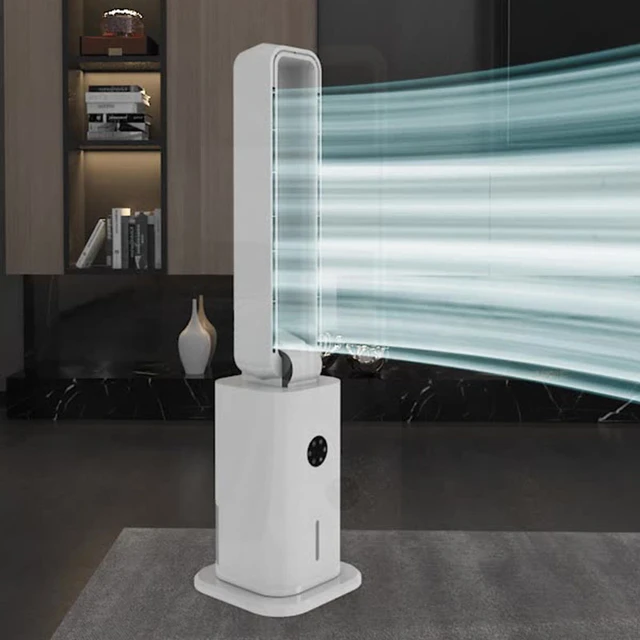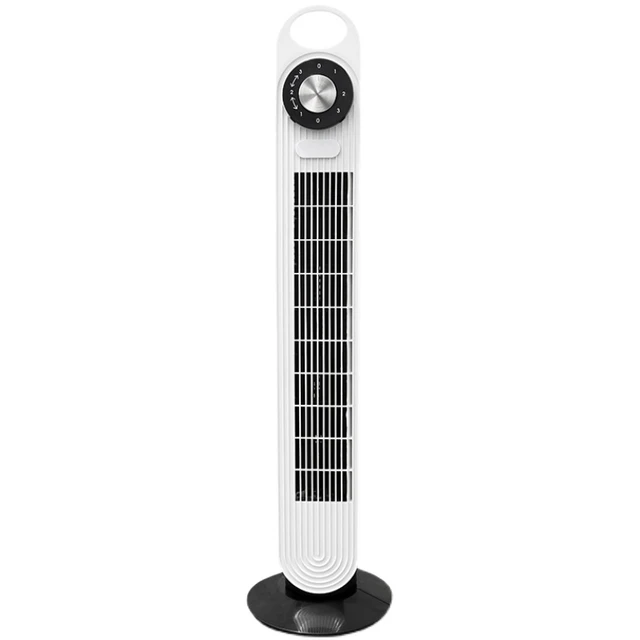Introduction
When it comes to cooling down a room, tower fans and pedestal fans are two popular options. Both types of fans offer benefits in terms of airflow and portability, but they also have distinct features. Deciding which type is better for you depends on specific requirements and preferences. In this guide, we will compare tower fans and pedestal fans, delving into their unique characteristics, functionality, and considerations to help you make an informed choice.

Is a tower fan better than a pedestal fan?
I. Tower Fans: Sleek Design and Space Efficiency
-
Slim and Compact Design:
- Tower fans are known for their sleek and vertical designs. They are tall, slender, and often have a smaller footprint compared to pedestal fans. This makes them ideal for smaller spaces or areas with limited floor space.
-
Vertical Airflow:
- Tower fans are designed to provide a vertical airflow pattern. They distribute the air vertically, creating a widespread cooling effect throughout the room. This can make them more effective in larger rooms or spaces with multiple occupants.
-
Oscillation Feature:
- Many tower fans come with an oscillation feature that allows the fan to rotate from side to side. This helps to disperse the air more evenly across the room, ensuring a consistent cooling experience.
-
Additional Features:
- Tower fans often come with additional features such as remote controls, programmable timers, and built-in air purifiers. These features can enhance convenience and offer added value.

II. Pedestal Fans: Adjustable Height and Directional Cooling
-
Adjustable Height:
- Pedestal fans offer the advantage of adjustable height. The fan head can be raised or lowered, allowing you to direct the airflow at different levels. This flexibility makes them suitable for various seating and standing positions.
-
Customizable Airflow Direction:
- Pedestal fans usually have adjustable fan heads that can be tilted up or down to direct the airflow precisely where it is needed. This allows for more targeted cooling and greater control over the airflow direction.
-
Powerful Airflow:
- Pedestal fans often offer more powerful airflow compared to tower fans. This can make them an excellent choice for larger rooms or situations where rapid cooling is desired.
-
Sturdiness and Stability:
- Pedestal fans are typically more stable and sturdy due to their wider bases and heavier weight. This can make them less prone to toppling over, which can be advantageous in households with active children or pets.

III. Noise Levels and Energy Efficiency
-
Noise Levels:
- Tower fans tend to operate at lower noise levels compared to pedestal fans. Their streamlined design and advanced motor technology contribute to a quieter cooling experience. This can be beneficial, especially in bedrooms or areas where noise sensitivity is a concern.
-
Energy Efficiency:
- Tower fans generally consume less energy than pedestal fans due to their smaller size and lower power requirements. They are designed to be efficient and run for extended periods without significantly impacting energy bills.
IV. Portability and Storage
-
Portability:
- Tower fans are lightweight and easy to move around. Their slim profile and integrated handles facilitate effortless relocation from room to room. This portability makes them suitable for individuals who desire cooling options in multiple areas of their home.
-
Storage:
- Tower fans have a compact design that requires minimal storage space. They can be easily stored in closets or tucked away when not in use. This makes them a practical choice, especially in households with limited storage options.
-
Assembly and Disassembly:
- Pedestal fans, although bulkier than tower fans, often require minimal assembly and disassembly. They can be easily transported and stored in a disassembled state, which can be advantageous when moving or during seasonal storage.
V. Individual Requirements and Preferences
-
Room Size and Layout:
- Consider the size and layout of the room where the fan will be used. For larger spaces or rooms with multiple seating areas, a pedestal fan’s powerful airflow and directional control may be more suitable. Smaller rooms or spaces with limited floor space can benefit from the slim design of a tower fan.
-
Personal Comfort:
- Personal preferences regarding noise levels, airflow direction, and cooling coverage differ from person to person. Consider factors such as your sensitivity to noise, the need for targeted airflow, and the desired cooling experience when choosing between a tower fan and a pedestal fan.
-
Budget and Features:
- Both tower fans and pedestal fans come in a range of prices depending on the brand, features, and quality. Consider your budget and the specific features you desire in a fan when making a decision. Determine whether the additional features offered by some tower fans are worth the potential cost difference.

VII. Maintenance and Cleaning
-
Cleaning Tower Fans:
- Tower fans may require more frequent cleaning due to their design and additional features. Dust and debris can accumulate on the vertical grilles and in the air purifier components (if present). Regularly vacuum or wipe down the fan to prevent dust buildup and maintain optimal performance.
-
Cleaning Pedestal Fans:
- Pedestal fans have a more exposed design, making them easier to clean. Wipe down the fan blades and the fan head with a damp cloth regularly to remove dust and keep the blades free from debris. Pay attention to the base and any controls as well.
-
Air Filter Maintenance:
- Some tower fans come with built-in air filters that require periodic cleaning or replacement. Follow the manufacturer’s recommendations for maintaining and cleaning these filters to ensure efficient airflow and filtration.
VIII. Safety Considerations
-
Stability and Tip-Over Protection:
- Due to their design and wider bases, pedestal fans tend to be more stable than tower fans. The wider base can help prevent tipping, especially in households with children or pets. However, both types of fans should be placed on a stable surface to minimize the risk of accidents.
-
Cord and Plug Safety:
- Ensure that the fan’s cord and plug are in good condition and not damaged. Avoid running the cord near water sources or areas where it can be tripped over. Regularly inspect the cord for any signs of wear and tear, and if any damage is observed, replace it as necessary.
-
Safe Operation and Electrical Requirements:
- Always consider the electrical requirements of the fan and ensure that the electrical outlets being used can handle the power load. Follow the manufacturer’s instructions for safe operation, such as avoiding overloading circuits or using extension cords if not recommended.

VI. Conclusion
Choosing between a tower fan and a pedestal fan depends on various factors, including room size, layout, personal preferences, and desired features. Tower fans are often favored for their space-efficient design, vertical airflow, and lower noise levels. They are suitable for smaller spaces and offer additional features for added convenience. On the other hand, pedestal fans are known for their adjustable height, customizable airflow direction, and powerful cooling capabilities. They are often more stable and an excellent choice for larger rooms.
Consider your specific requirements and preferences in terms of space, airflow direction, noise levels, portability, and storage when selecting a fan. Assess the features and benefits of both tower fans and pedestal fans to make an informed decision that suits your individual needs. Ultimately, the right choice depends on finding the fan that provides optimal comfort and cooling for your particular space and preferences.
